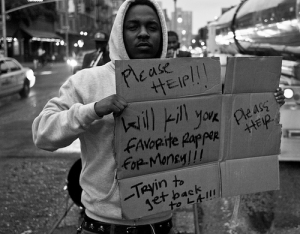People everywhere, young and old, envision living the dream – a rock star’s life, one filled with guitars, money, fame and inevitable failed romances with pop stars.
What they don’t dream of is the long path it takes to get there.
Maroon 5 is playing Wednesday at the Peoria Civic Center Theater, and its been a long road to the success they have today.
The band’s journey began back in 1994, while they were still in high school in Los Angeles. Adam Levine, Jesse Carmichael, Mickey Madden and Ryan Dusick decided to start a band, though with a much stranger name – Kara’s Flowers. Legend has it Kara was the name of a crush they all had. Their sound was much moodier and darker than Maroon 5’s and was heavily influenced by bands such as Nirvana and Pearl Jam.
After scoring a record deal, Kara’s Flowers released an album, “The Fourth World,” in 1997. The single “Soap Disco,” was released, but it never caught on and drove the band to take a break.
Levine and Carmichael headed east to Long Island, N.Y. and Madden and Dusick stayed in Los Angeles.
The break proved to be the best thing to happen to the band, as New York introduced Levine to new musical styles, such as hip-hop and R&B, and he integrated them into his music.
This musical awakening motivated Levine to get the band back together and start making fresh music. They recorded a new demo, which included “Sunday Morning” and gained the attention of Octone Records, which signed the group to a new deal and forced them to change their name. They also added a fifth member, guitarist James Valentine, to allow Levine to focus on fronting the band.
According to Madden on the band’s official Web site, “As to the origin of the name, it’s a secret, and aside from the five of us only Billy Joel knows its provenance.”
Their newfound sound and a nasty break-up between Levine and his girlfriend led to Maroon 5’s debut, “Songs about Jane.” Released in 2002, “Songs about Jane” slowly began to gain attention, mostly through heavy touring. The band toured with O.A.R., Train and Sheryl Crow before John Mayer handpicked Maroon 5 to open for him in 2003.
In 2004, singles such as “Harder to Breathe” and “This Love” catapulted the band into Billboard’s Top 10 and dominated airwaves. They continued to tour, but the constant strain of the road eventually led to the exit of drummer Dusick.
Matt Flynn, who had drummed for Gavin DeGraw and the B-52s, took Dusick’s place.
After a brief and much-needed break, the band recorded “It Won’t Be Soon Before Long.”
During this time, they toured with a wide variety of acts, as classic as The Rolling Stones and as emo as Dashboard Confessional.
With such a strong following, the album resonated with fans immediately, hitting No. 1 on the Billboard charts in its opening week.
“It Won’t Be Soon Before Long” brought about hits such as “Makes Me Wonder,” “Wake Up Call” and “If I Never See Your Face Again.”
“If I Never See Your Face Again” was re-released with Rihanna and Levine sharing the vocals, adding a quirky spice to the song.
On Wednesday, Maroon 5 is making its way to Peoria as part of its Back to School tour. With a great live sound, one just as good if not better than their albums, they are guaranteed to do what they do best – play their music.
The question, though, is how much longer will it be played? In a 2008 interview with The Daily Mail, a British newspaper, Levine said, “Eventually I want to focus on being a completely different person, because I don’t know if I want to do this into my 40s and 50s and beyond like The Rolling Stones.”
While they have yet to reach an epic number of farewell tours like The Rolling Stones, Maroon 5 will keep living that dream – playing their music, making money and gaining fame. For the sake of the music, let’s hope there are more failed romances in store.




